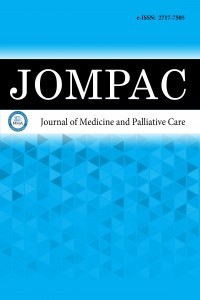1.
Muchowski KE. Evaluation and treatment of neonatalhyperbilirubinemia. Am Fam Physician. 2014;89(11):873-878.
2.
“American Academy of Pediatrics Clinical Practice GuidelineSubcommittee on Hyperbilirubinemia Management ofHyperbilirubinemia in the Newborn Infant 35 or More Weeksof Gestation,” 2004. Available from: www.aap.org/family/jaundicefaq.
3.
Kurt A, Tosun MS, Altuntaş N, Erol S. Effect of phototherapy onperipheral blood cells in hyperbilirubinemic newborns. J CollPhysicians Surg Pak. 2020;30(5):547-549.
4.
Kurt A, Aygun AD, Citak Kurt AN, Godekmerdan A, Akarsu S,Yilmaz E. Use of phototherapy for neonatal hyperbilirubinemiaaffects cytokine production and lymphocyte subsets. Neonatology.2009;95(3):262-266 doi: 10.1159/000171216
5.
Sajid A, Mahmood T, Riaz S, Nabi SG. Phototherapy inhyperbilirubinemic neonates; does it affect platelet count? AnnKing Edward Med Uni. 2016;22(3):215-220.
6.
Bolat F, Uslu S, Bulbul A, Comert S, Can E, Nuhoglu A, Evalutionof term newborns hospitalized in our NICU with the diagnosis ofindirect hyperbilirubinemia. J Child. 2010;10(2):69-74.
7.
Altuntaş N, Akpınar Tekgündüz S, Özkan Kırgın B, DoğanÖC, Kışlal FM. Is the phototherapy requirement in neonatalhyperbilirubinemia due to Ab0 incompatibility predictable? TurkJ Pediatr Dis. 2019;13(5):330-334. doi: 10.12956/tjpd.2018.389
8.
Aydın B, Beken S, Zenciroğlu A, Dilli D, Özyazıcı, E, Okumuş,N. Effect of conventional and LED phototherapy on eosinophil,albumin and uric acid levels in newborns with severeindirect hyperbilirubinemia. Paper presented at: 21st NationalNeonatology Congress; 13-17 April, 2013; Antalya, Turkey.
9.
Kaplan M, Bromiker R, Hammerman C. Severe neonatalhyperbilirubinemia and kernicterus: are these still problemsin the third millennium? Neonatol. 2011;100(4):354-362. doi:10.1159/000330055
10.
Çoban A, Kaynak Türkmen M, Gürsoy T. Turkish neonatalsociety guideline to the approach, follow-up, and treatment ofneonatal jaundice. Turk Pediatri Ars. 2018;53(Suppl 1):S172-S179.doi: 10.5152/TurkPediatriArs.2018.01816
11.
Erdeve Ö, Okulu E, Olukman Ö, et al. The Turkish neonataljaundice online registry: a national root cause analysis. PLoS One.2018;13(2):e0193108 doi: 10.1371/journal.pone.0193108
12.
Jahanshahifard S, Ahmadpour-Kacho M, Pasha Y. Effects ofphototherapy on cytokines levels and white blood cells in termneonate with hyperbilirubinemia. J Clin Neonatol. 2012;1(3):139-142. doi: 10.4103/2249-4847.101696
13.
Yılmaz FH, Kara B, Ertan K. effects of phototherapy onhematological parameters in newborns with indirecthyperbilirubinemia. Abant Med J. 2022;11(3):283-294. doi:10.47493/abantmedj.1065601
14.
Li T, Dong G, Zhang M, et al. Association of neutrophil-lymphocyte ratio and the presence of neonatal sepsis. J ImmunolRes. 2020;2020:7650713. doi: 10.1155/2020/7650713
15.
Khera S, Gupta R. Incidence of thrombocytopenia followingphototherapy in hyperbilirubinemic neonates. Med J ArmedForces India. 2011;67(4):329-332. doi: 10.1016/S0377-1237(11)60078-6
16.
Pishva N, Pishva H. Incidence of thrombocytopenia inhyperbilirubinemic neonates during phototherapy. Acta MedIranica. 2000;38(1):7-9.
17.
Adanır H, Akıncıoğlu P. The importance of systemic immune-inflammation index in ulcerative colitis. Dicle Med J.2022;49(3):521-528. doi:10.5798/dicletip.1170395
18.
Ercan Z, Aylı MD. Systemic immune inflammation indexcan predict mortality in dialysis patients. Turk J Clin Lab.2023;14(2):392-398. doi:10.18663/tjcl.1278035
19.
Çetinkaya HB, Çay F. Usability of NLR in differentiating simpleand severe cholecystitis in emergency department admissions.Van Med J. 2021;28(4):502-506.
20.
Çay F, Çetinkaya HB. The usability of shock index and lactate inpredicting mortality in multitrauma patients presenting to theemergency department. Anatolian Curr Med J. 2022;4(2):185-189.
21.
Khan NM, Poduval TB. Immunomodulatory oath immunotoxiceffects of bilirubin: molecular mechanisms. J Leukocyte Biol.2011;90(5):997-1015. doi.org/10.1189/jlb.021107

